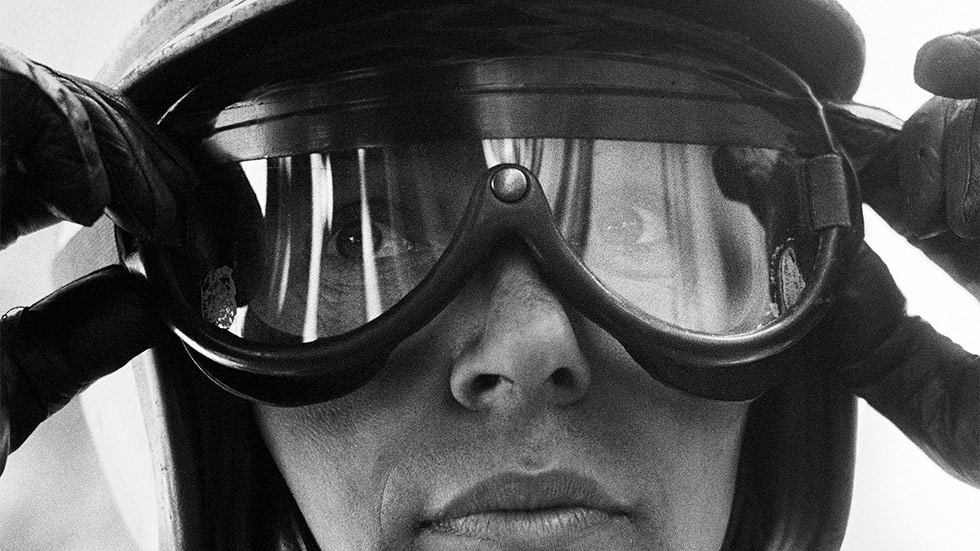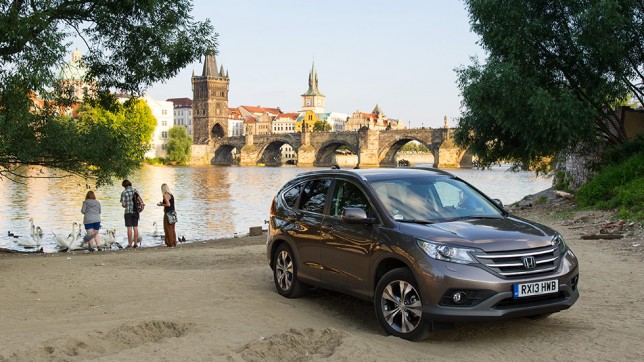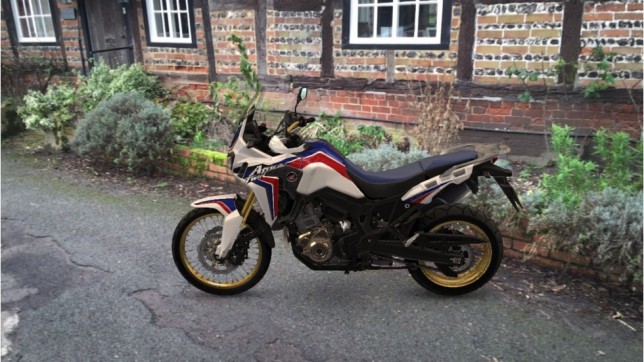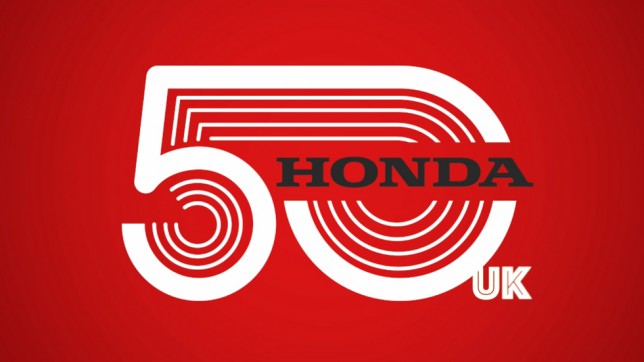By Jethro Bovingdon
To reach the pinnacle of motorsport requires total commitment, extreme talent, an overwhelming desire to win, no little bravery and the smiling eyes of Lady Luck to fall upon you.
The greatest motorcycle riders or racing drivers devote their entire lives to honing their technique and extracting every ounce of performance from their natural talent. Many get close, but ultimately fail. Many more simply find that their dream is far out of reach.
However, heaped upon that mountain of shattered dreams are extraordinary tales of heroism and moments of pure joy.
No ordinary man
And no tale is more extraordinary than that of John Surtees OBE – multiple motorcycle world champion turned racing driver who went on to become Formula One world champion; a man who survived perhaps the most dangerous period in motorsport; a man who left the Ferrari F1 team on a point of principle and joined Honda Racing.
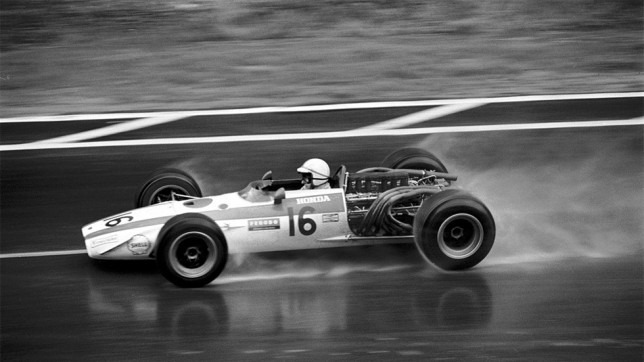
Surtees started young, but became best known for his association with Honda
Surtees was born on 11 February 1934 in Surrey. His interest in motorcycles was sparked at an early age by his father Jack, who ran a motorcycle shop.
‘Of course, I was born just before the war, and when I was five my father went away to train despatch riders at Catterick. Then we got bombed out and moved north, so it was only really after the war that I got involved with the motorcycles.’
Grass tracks
It wasn’t long before Surtees was racing. ‘My first race was when I was 15, on an Excelsior B14 JAP. It was on a grass track and I think I fell off every way that you could imagine.’
Despite those early incidents, there’s an effortlessness about the way Surtees describes racing motorcycles that offers a window into his rare affinity with machinery. ‘In 1950, with a Vincent Grey Flash that I’d built up myself,
I won the second time out. It was the start of a continuous winning streak, I suppose. I found I could relate to the bike and that it could relate to me. That first race win was the most important of my life, because it was the day that it all came together – like suddenly understanding a foreign language.’
Early success
Once Surtees had felt that intense connection, great success followed. He became world champion of the premier 500cc GP category in 1956 and repeated the feat in 1958, 1959 and 1960.
The determination to race and win on two wheels never diminished, but at a Sportsman of the Year dinner Surtees’ career took an unexpected twist.
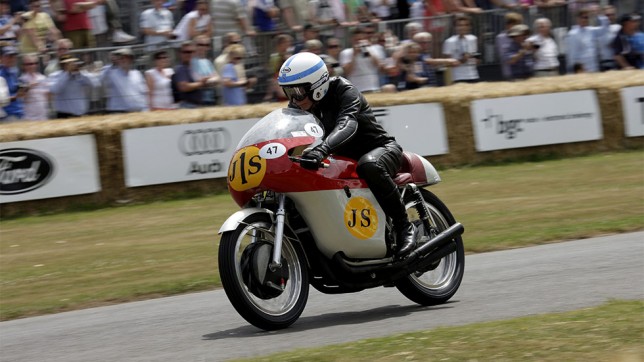
Surtees regularly wows crowds of fans at Goodwood Festival of Speed, shown here in 2009
‘I was sat at a table with Tony Vandervell [owner of the Vanwall F1 team], Reg Parnell [team manager of Aston Martin] and then-world champion Mike Hawthorn. They suggested that I should try a car because cars stand up easier – but I declined.
‘However, some months later Reg called and offered me a test at Goodwood. I tried it; an Aston Martin DBR1. He wanted me to sign a contract immediately.’
Racing bikes and cars
Surtees again declined, but when his motorcycle team wanted to restrict his racing activities he found that suddenly he had plenty of free weekends. ‘I did a Formula Junior race and that season I raced bikes one weekend and cars the next.’
The quiet, matter-of-fact way in which Surtees describes this unprecedented period is remarkable. To Surtees, though, it seems it was almost easy. ‘I didn’t have a great problem doing fast times. I wasn’t as safe as perhaps one would like – a bit hairy, I suppose – but the speed was there. My first race I put the car on pole position.’
Accident in Canada
Surtees may have taken a while to knock the rough edges from his driving technique, but his speed took him to an F1 World Championship in 1964 driving for Scuderia Ferrari. History was made. However, while testing a sportscar in Canada, Surtees was involved in a huge accident and had life-threatening injuries.
He made a full recovery but was left out of Ferrari’s effort for the famous Le Mans 24-hour race because of his fitness. A disgruntled Surtees immediately withdrew from Ferrari’s F1 team in the middle of the 1966 season (which cost him another world championship), and in 1967 he would drive for Honda.
The Honda years
‘Mr Yoshio Nakamura [Honda’s F1 team manager] came to me and simply said, “If you drive for us we’ll continue, if not we’ll stop. We want you to be our driver and also help us organise our company in Europe.” It seemed a big challenge, but a new three-year programme had potential. What struck me was how Honda often moved its design and engineering teams around in order to educate as many people as possible. The enthusiasm was very similar to the passion I found in Italy at Ferrari.’
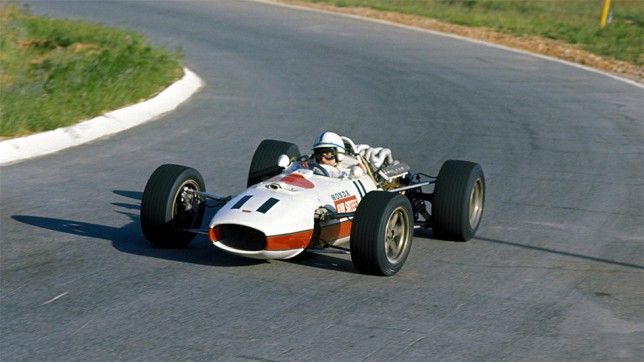
Surtees taking third place in the South African Grand Prix
Surtees took his sole victory for Honda at the Italian Grand Prix in 1967, and after the tragic death of his team mate Jo Schlesser, Honda pulled out of F1 at the end of 1968.
Soichiro Honda once said that ‘success is 99 per cent failure’, and although ultimately Surtees and Honda failed to realise a world championship, this period advanced technology at a rapid pace, putting Honda’s engineering expertise on the world stage.
The company later returned to F1 and supplied the engine for the most successful F1 car of all time – the McLaren MP4/4. In 2015 Honda will once again compete in F1 as an engine supplier. As Surtees says, ‘Honda is back where it belongs.’



